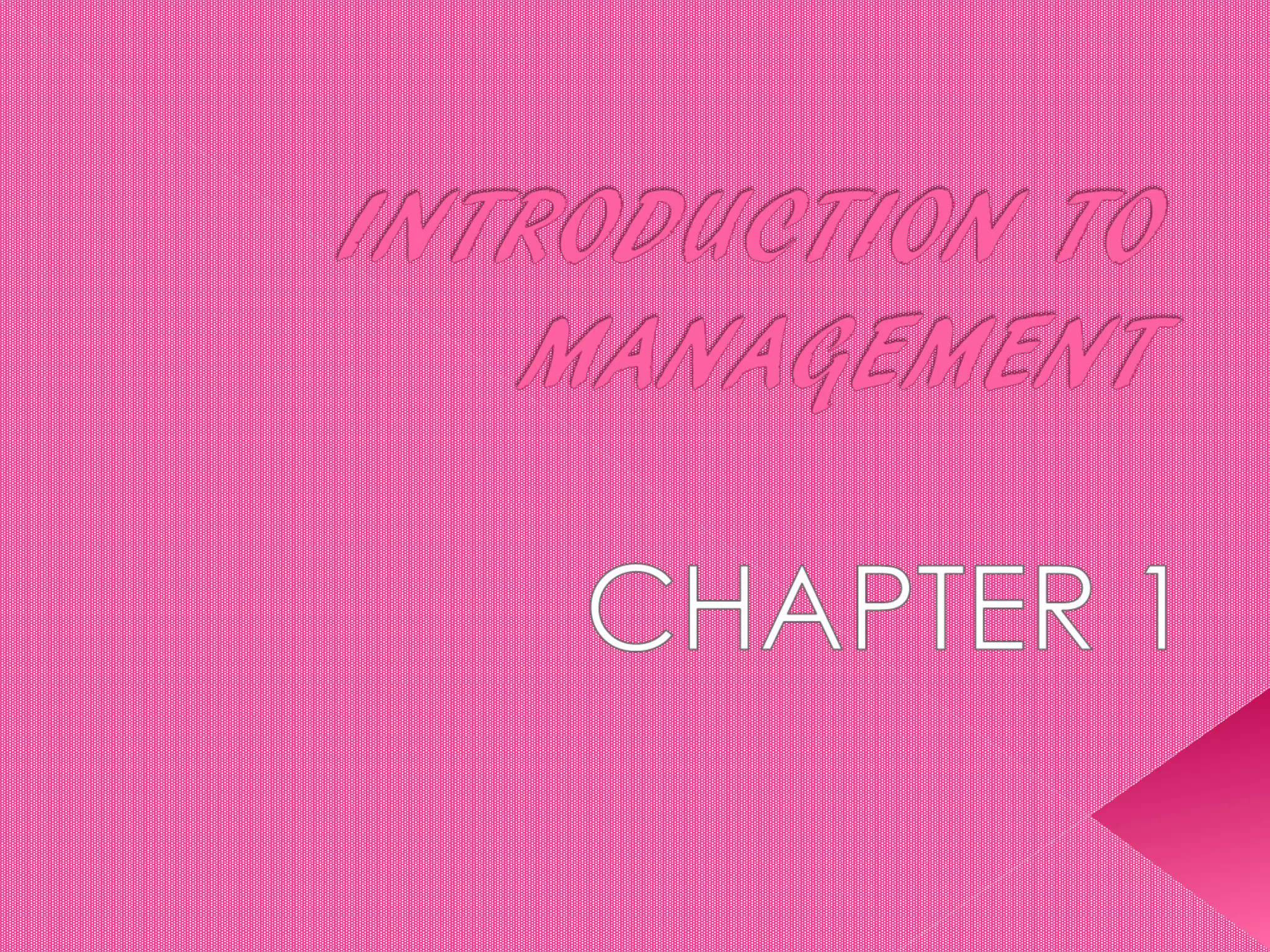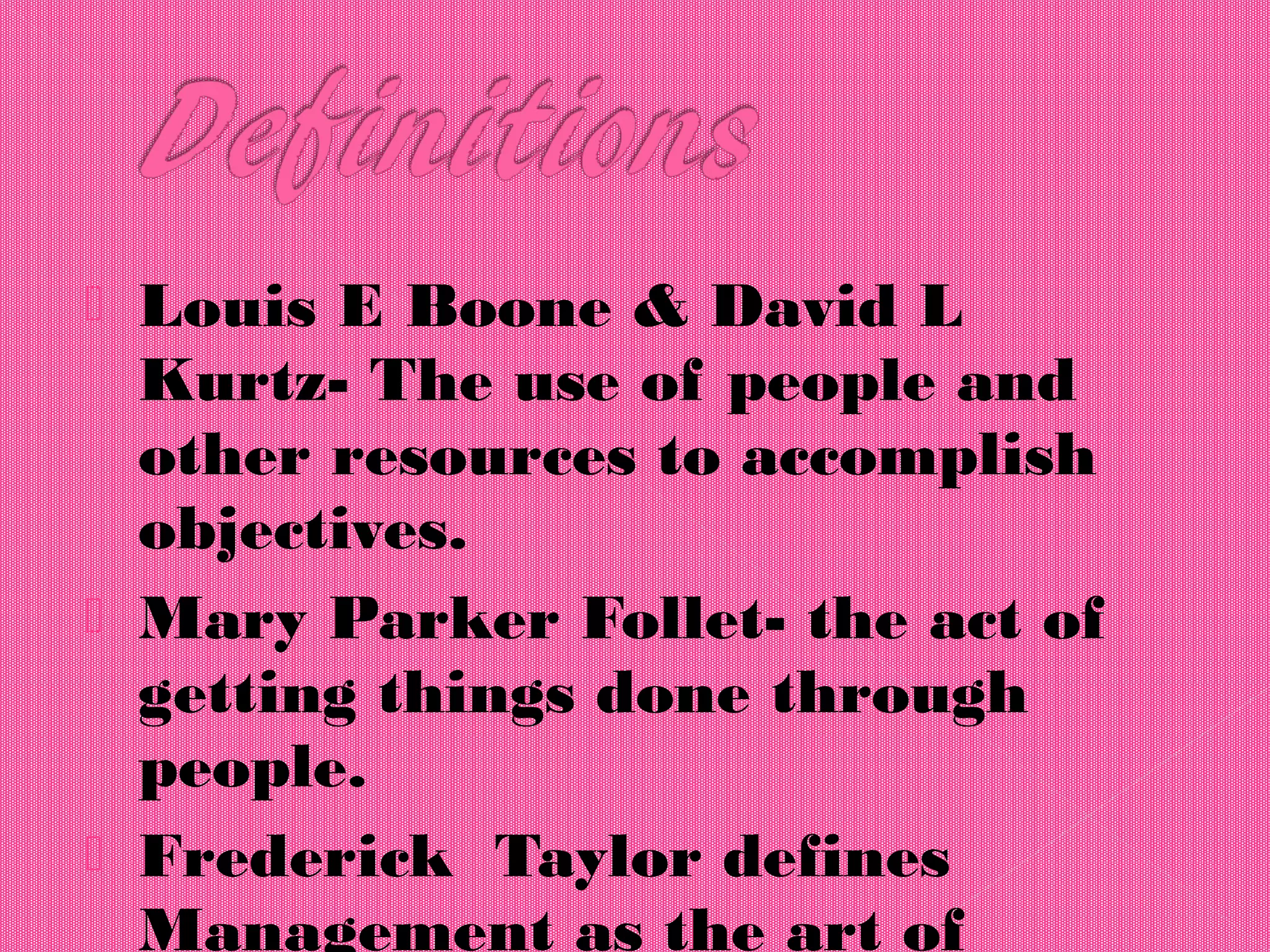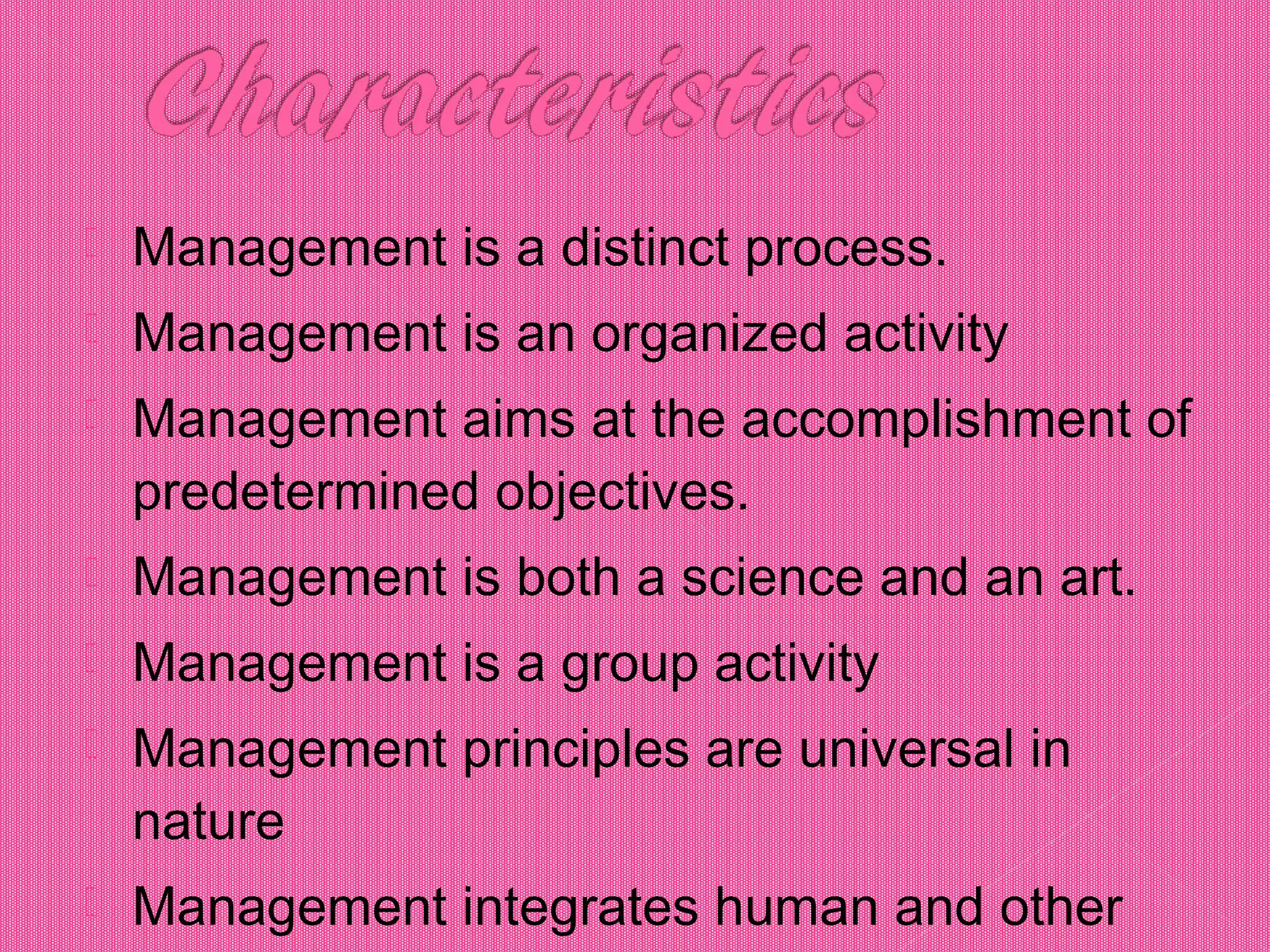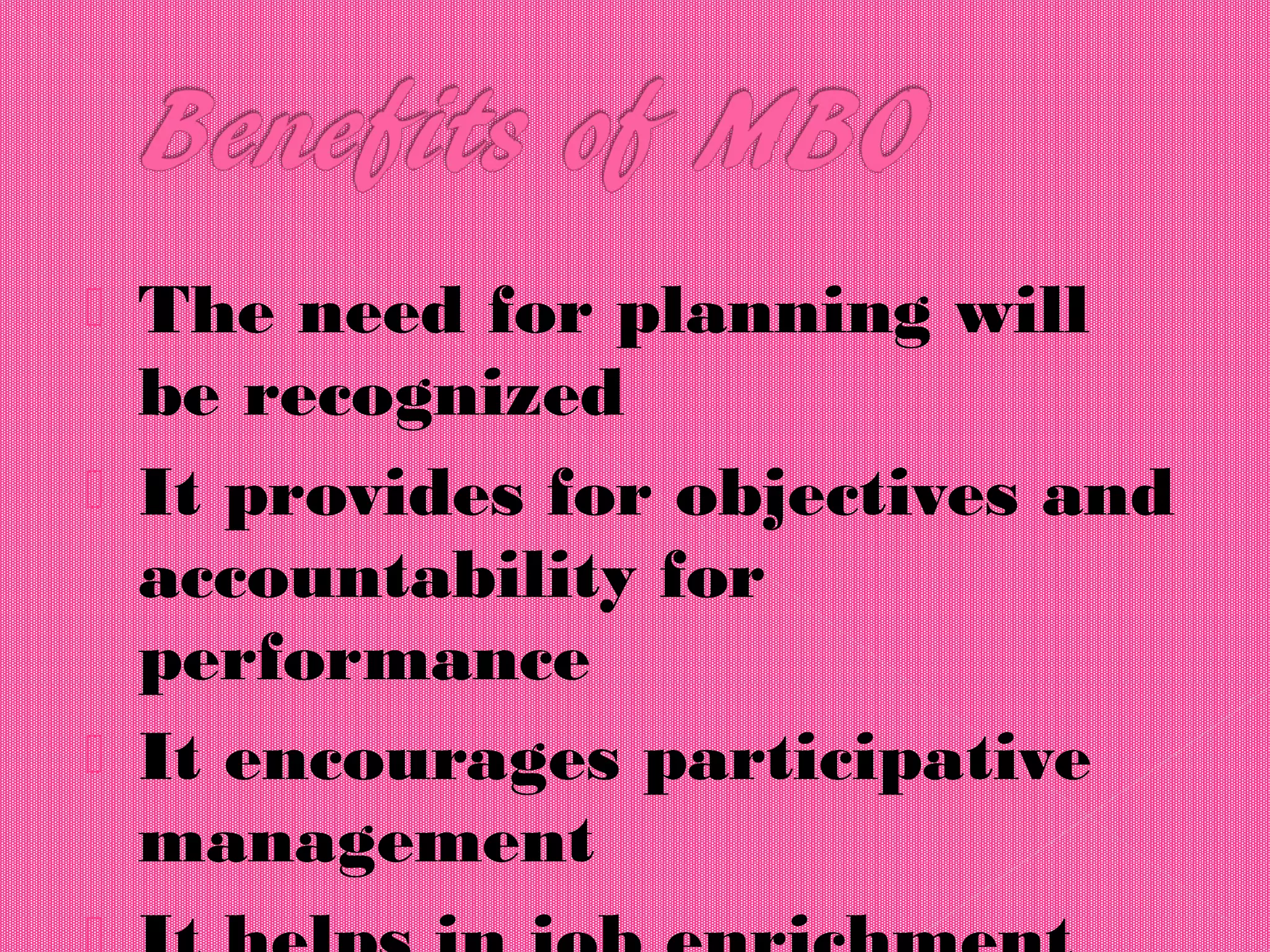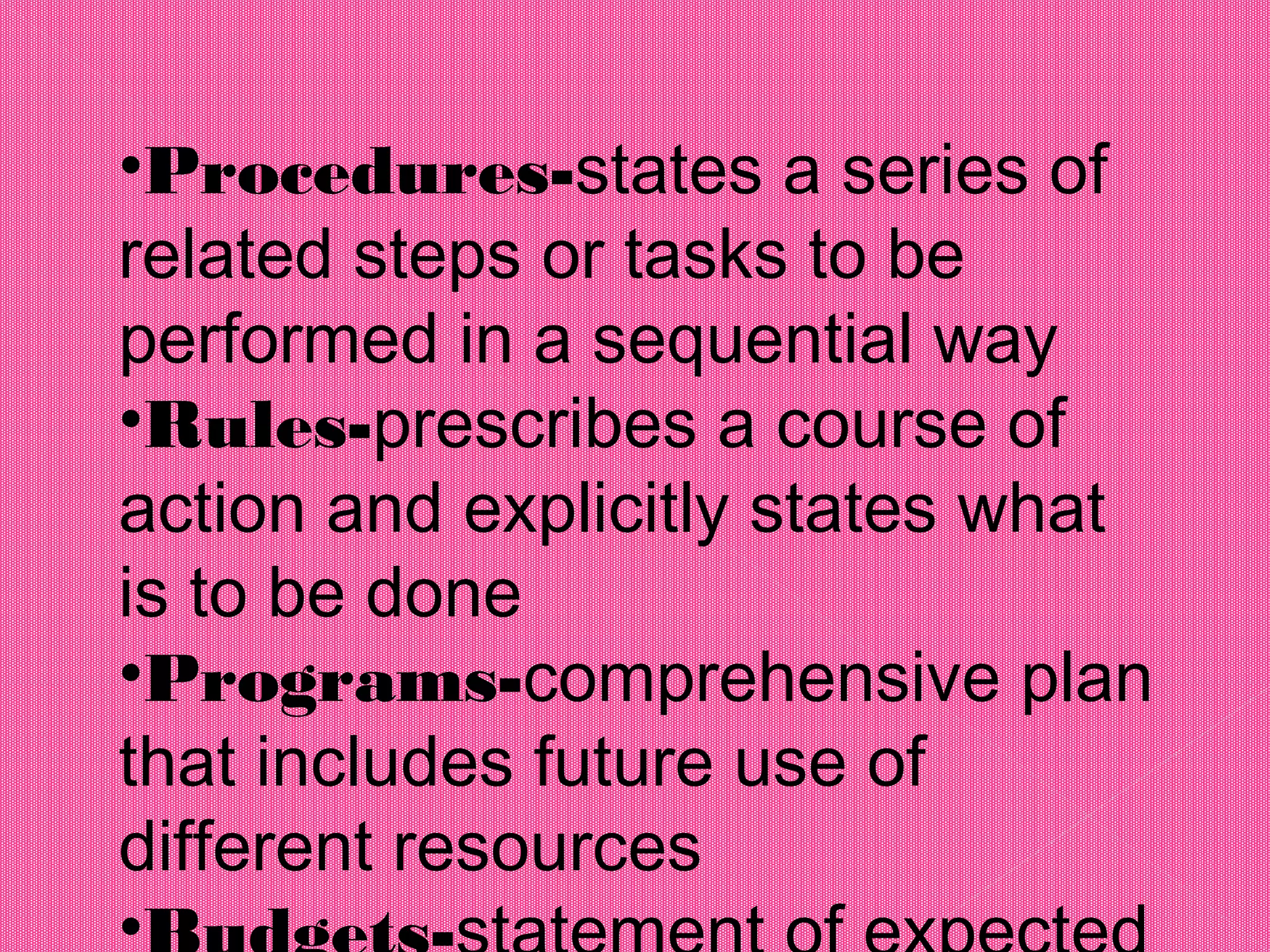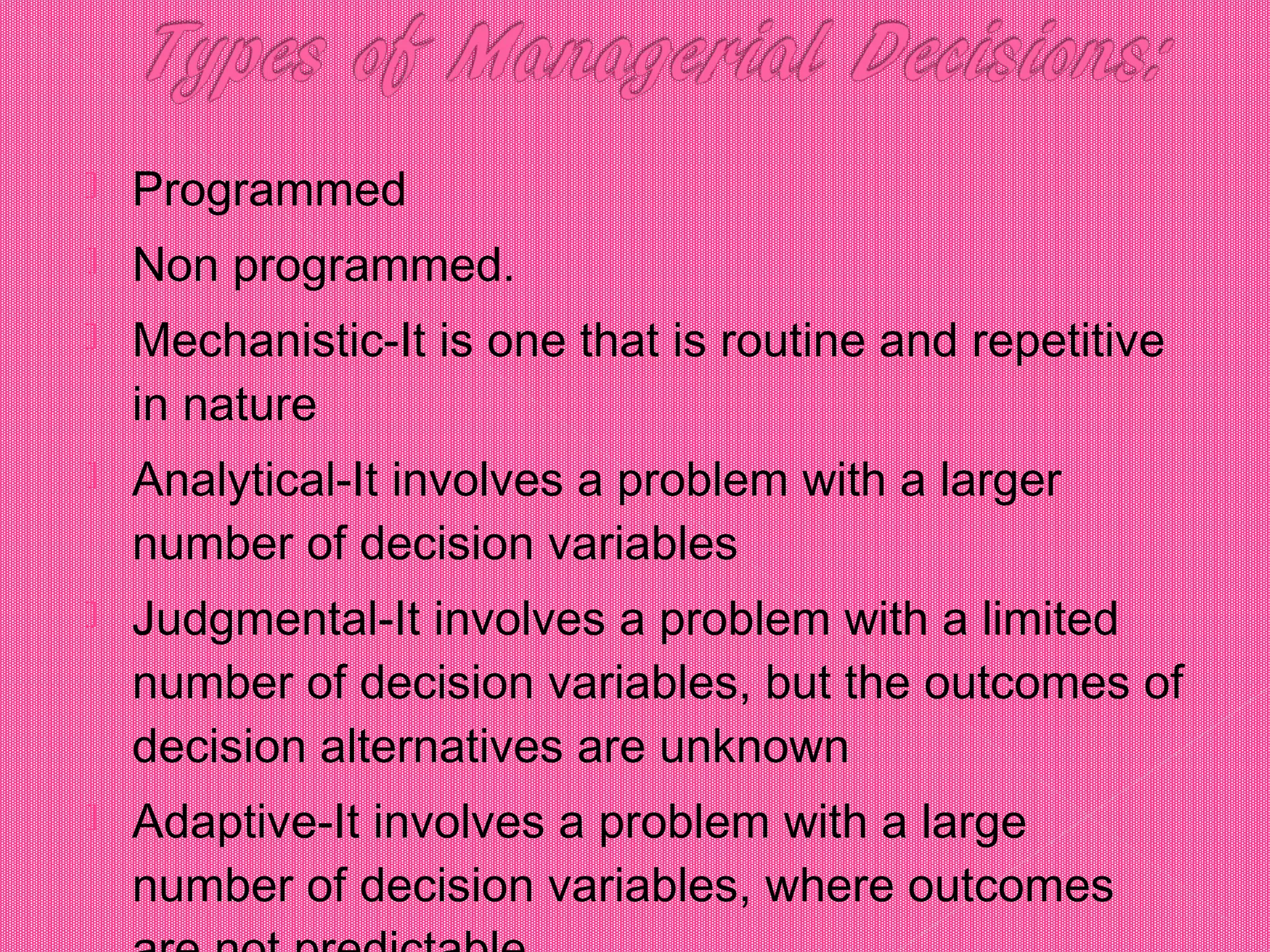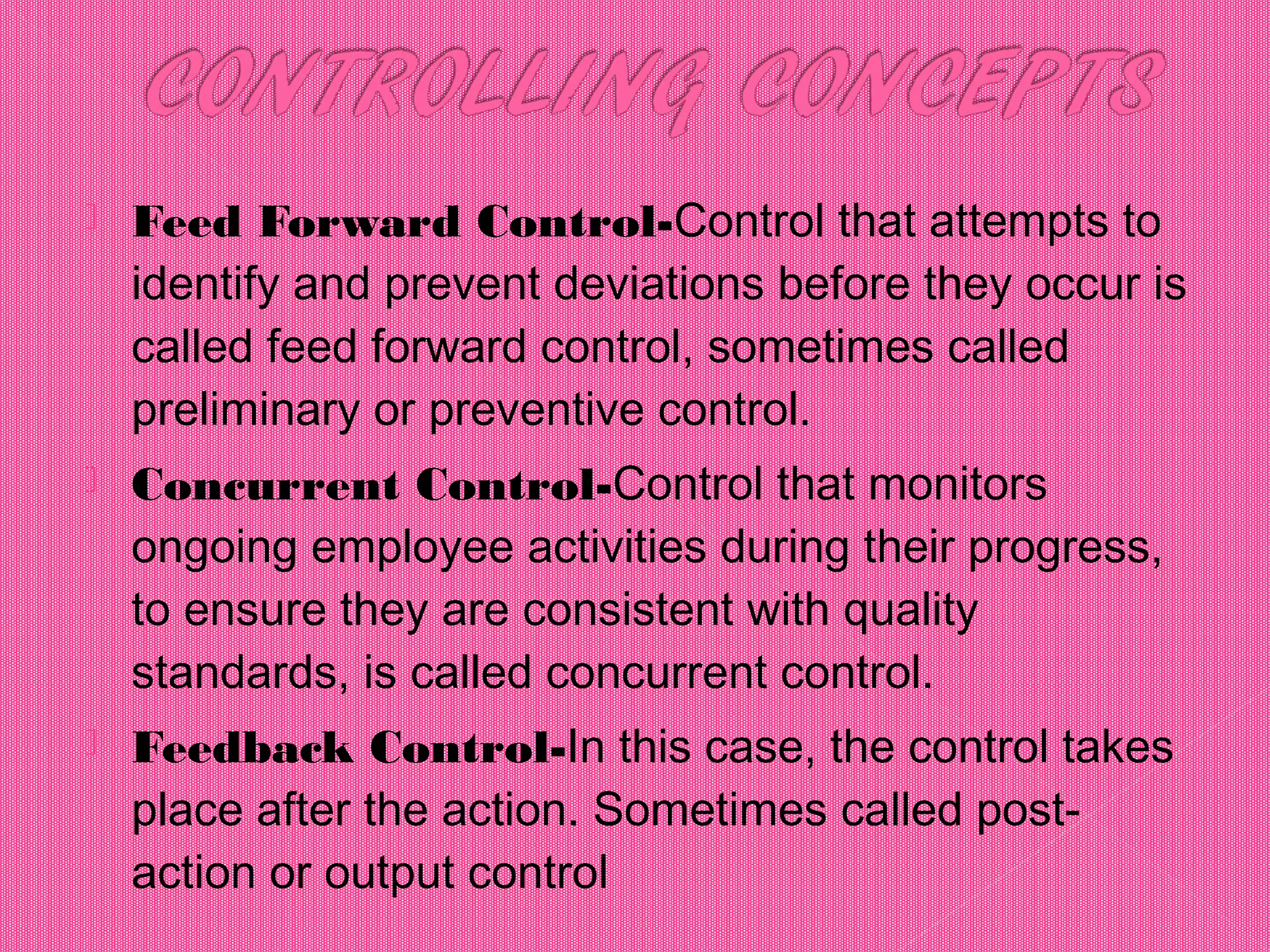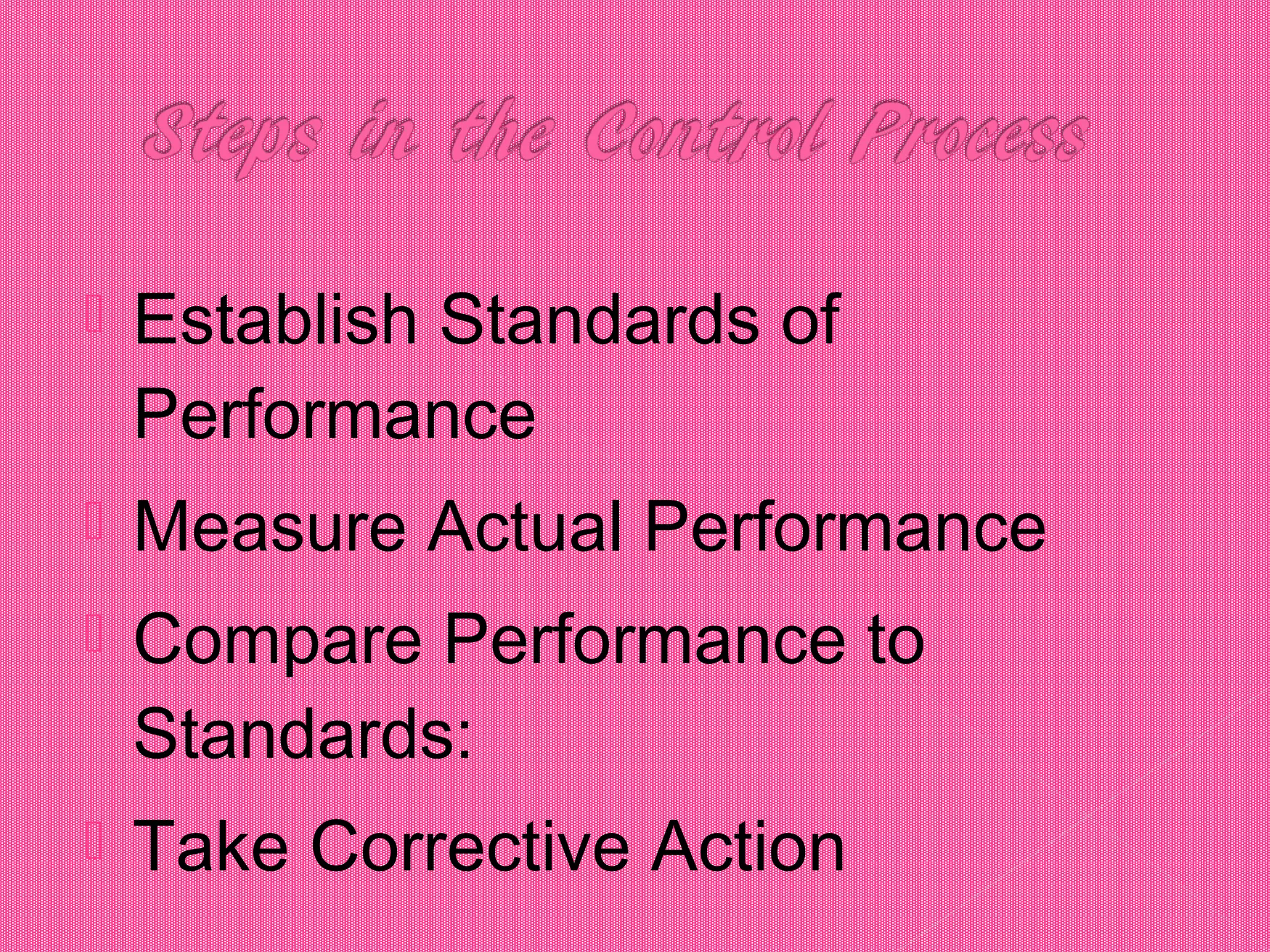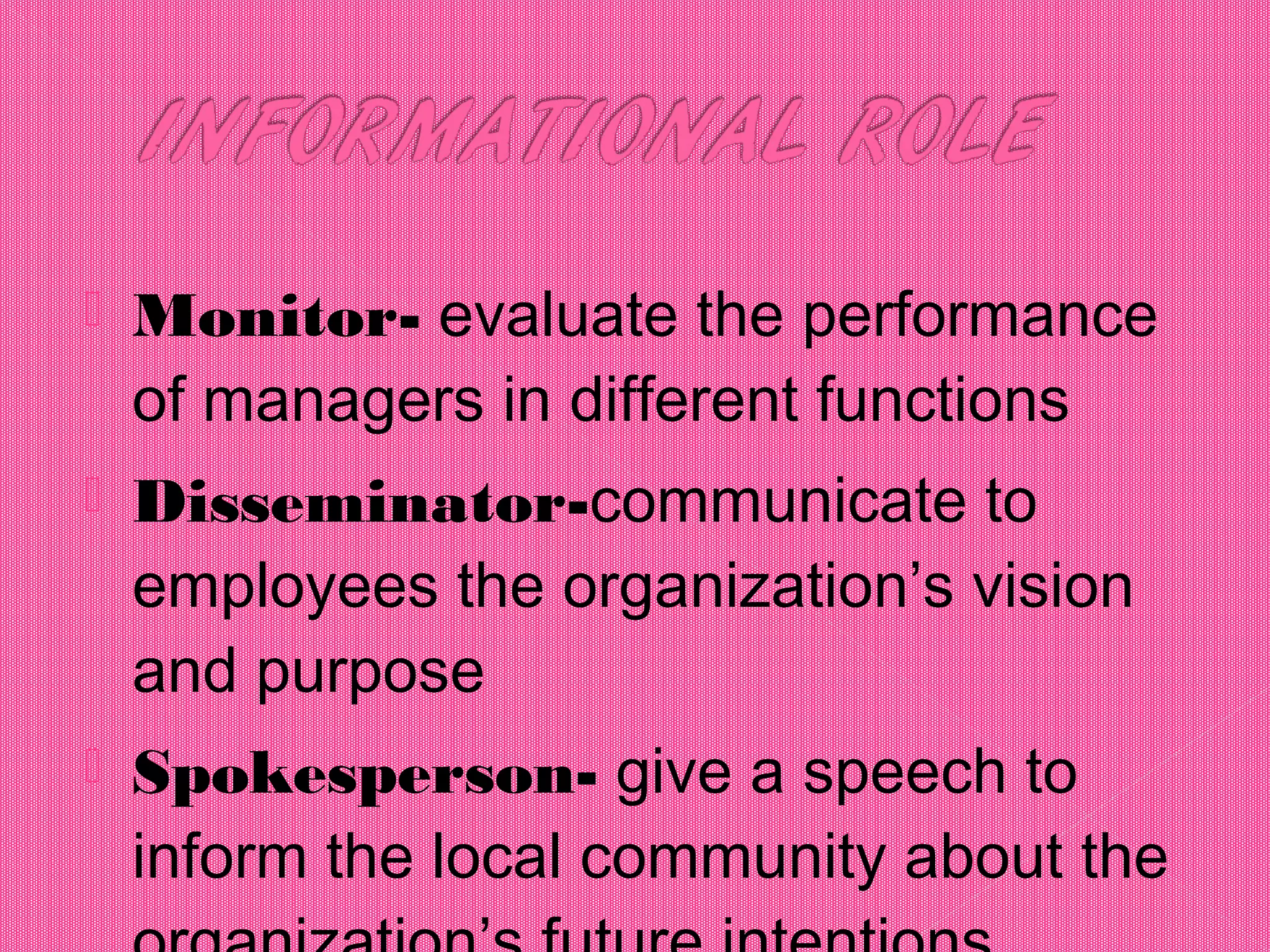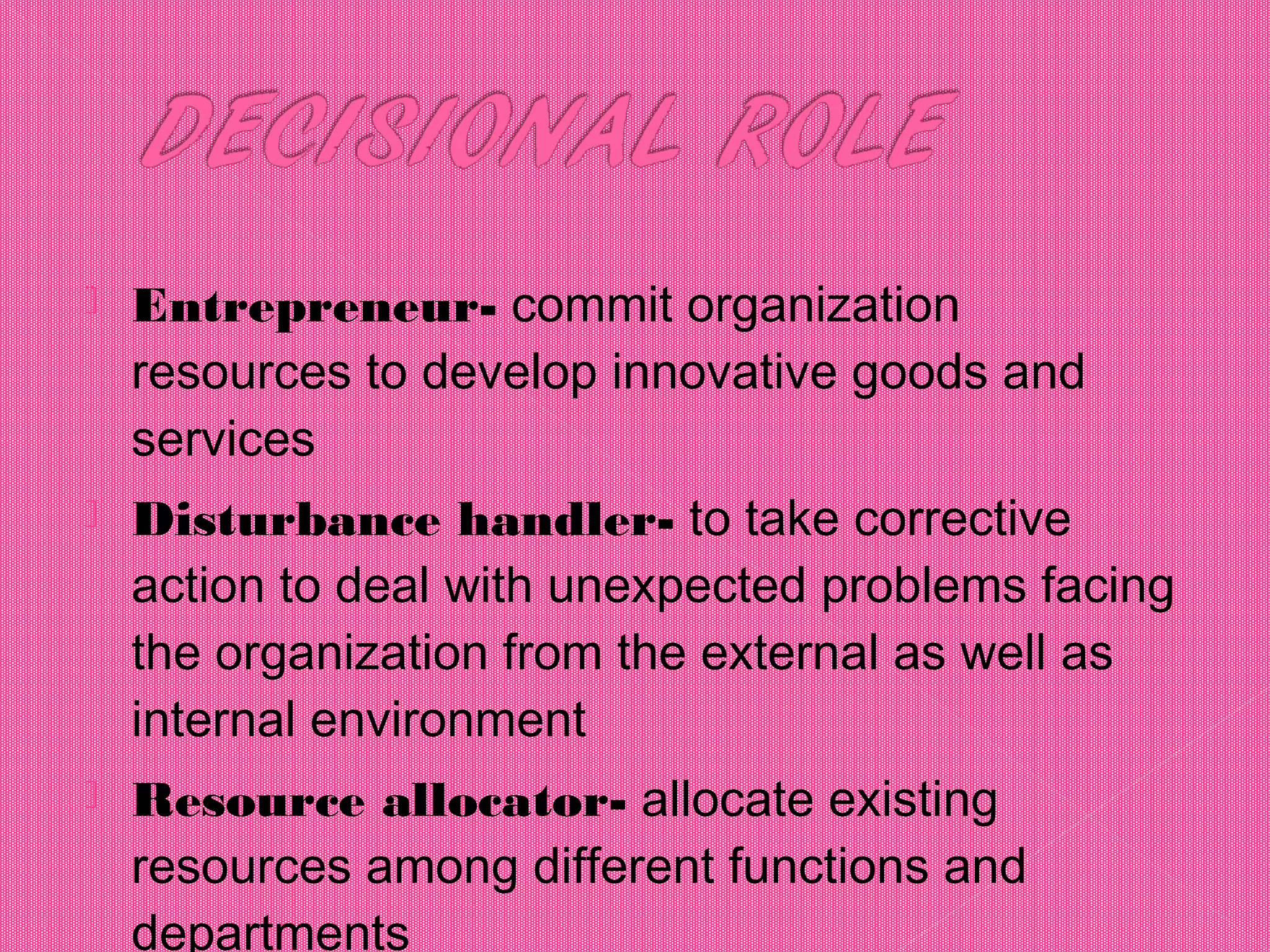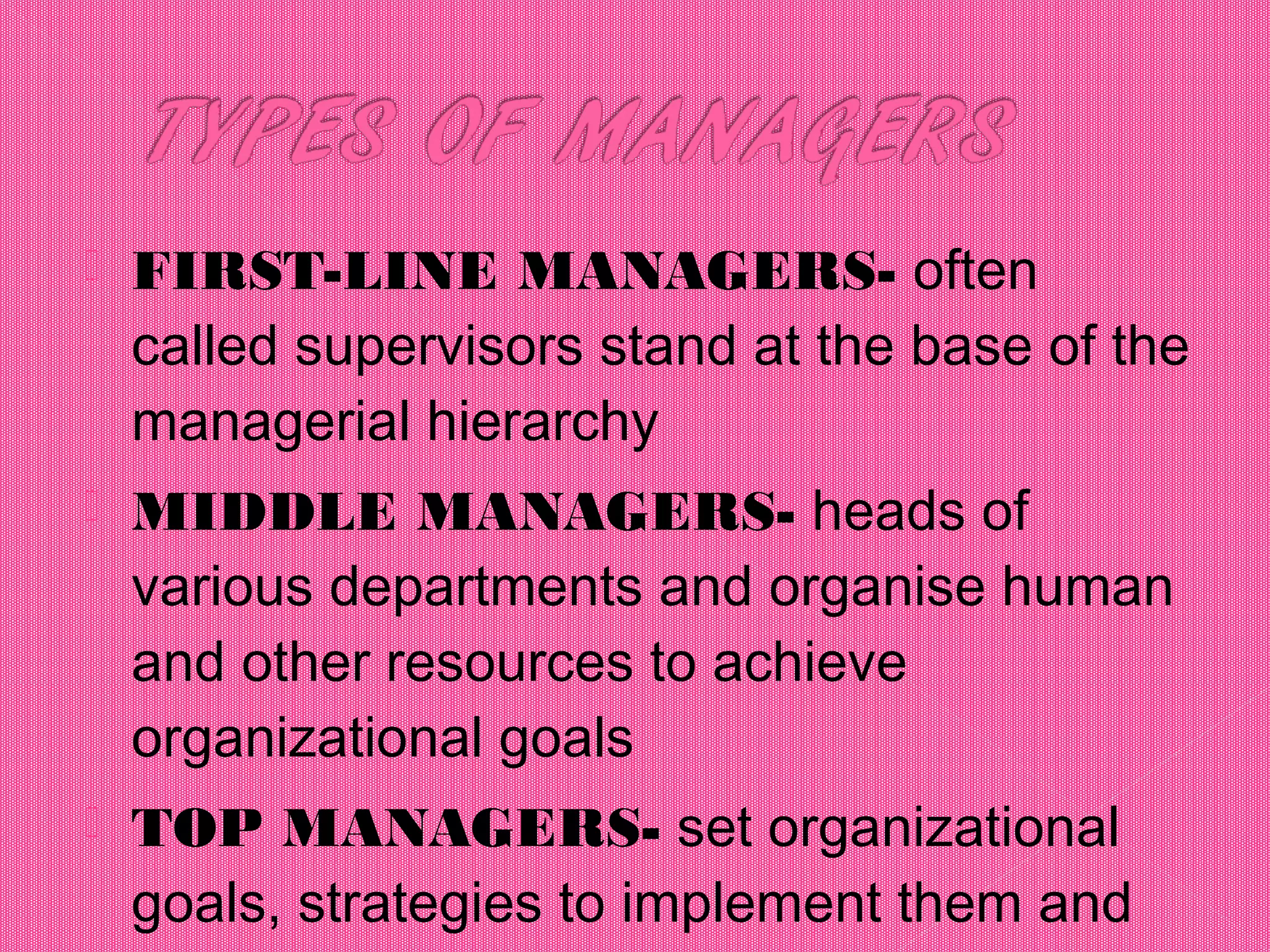Management involves planning, organizing, staffing, directing and controlling organizational resources to achieve goals effectively and efficiently. The document discusses the definitions, characteristics, functions and principles of management. It describes planning as determining objectives and methods to achieve them. Organizing involves structuring job tasks, assigning responsibilities, and coordinating departments. Staffing is selecting and training employees for jobs. Directing is providing leadership and motivating employees. Controlling monitors performance and takes corrective actions when needed.
